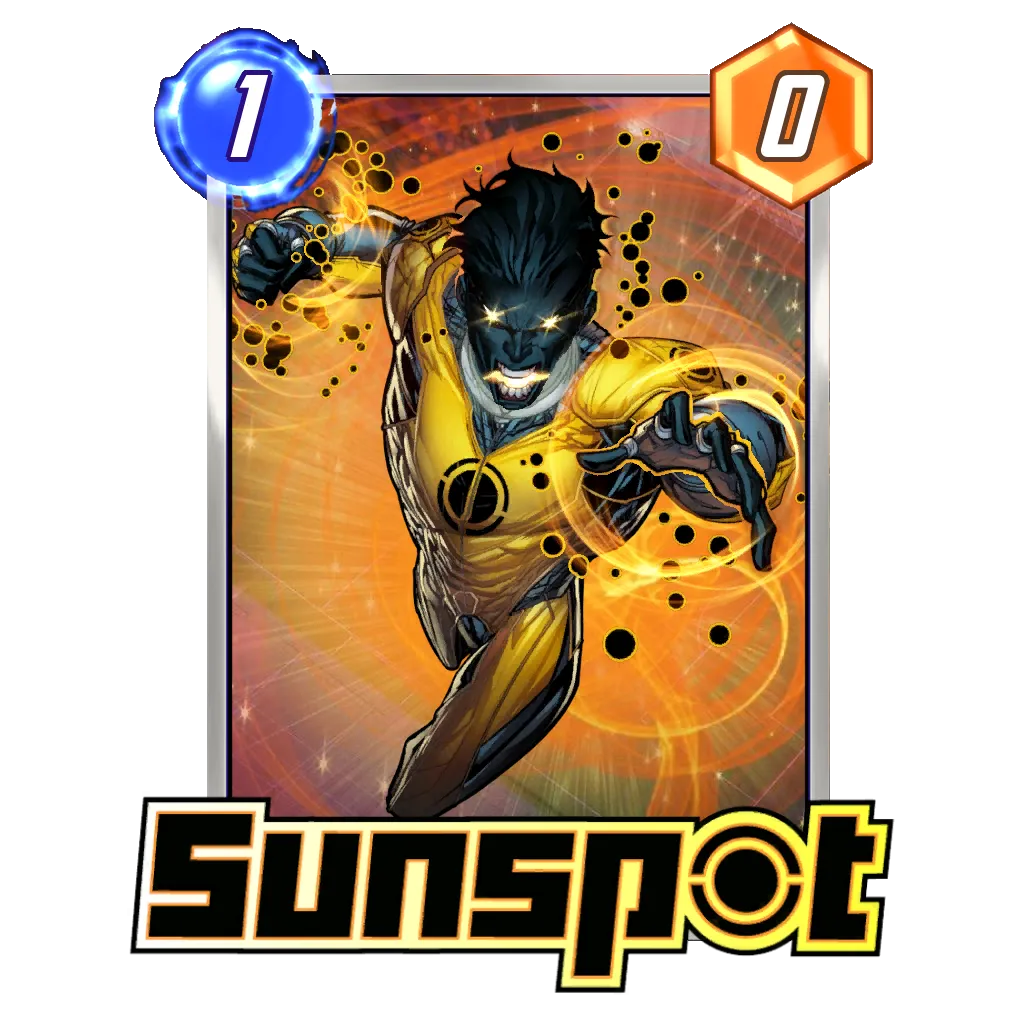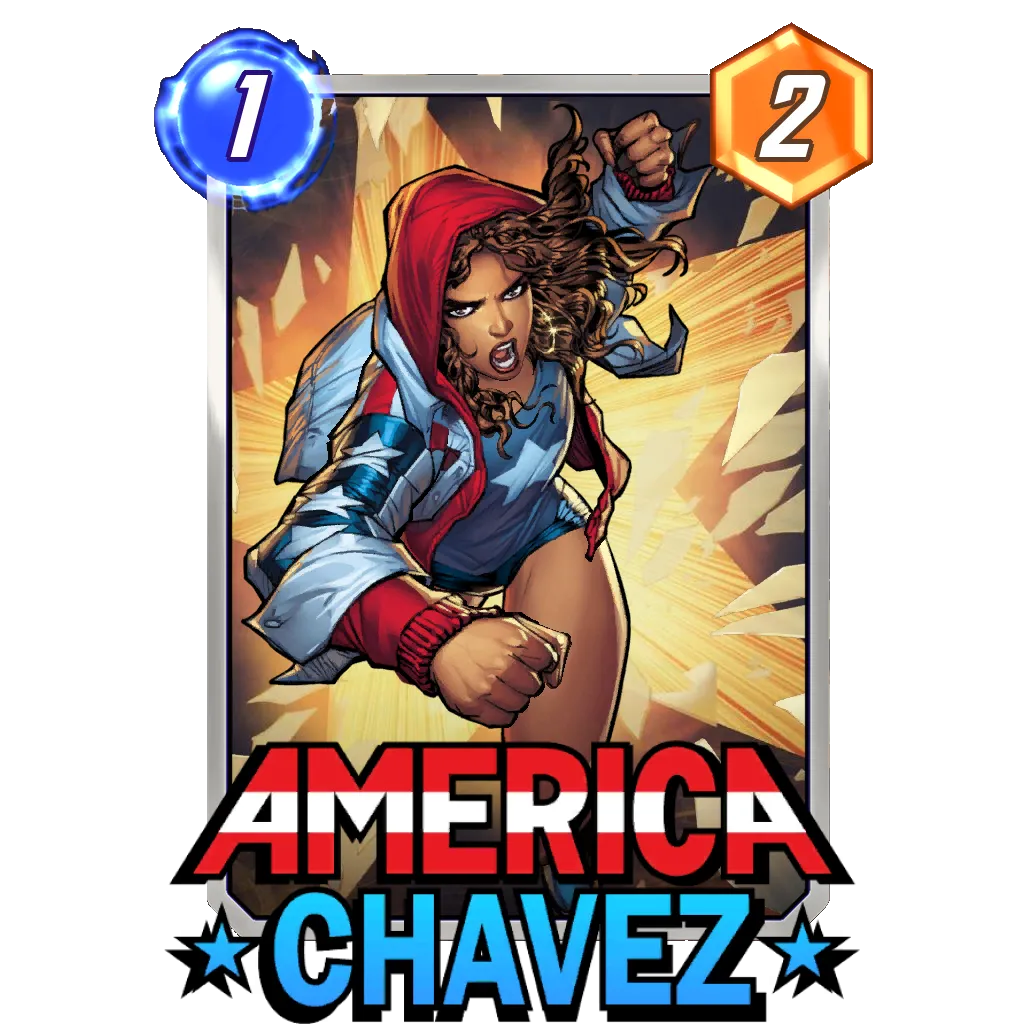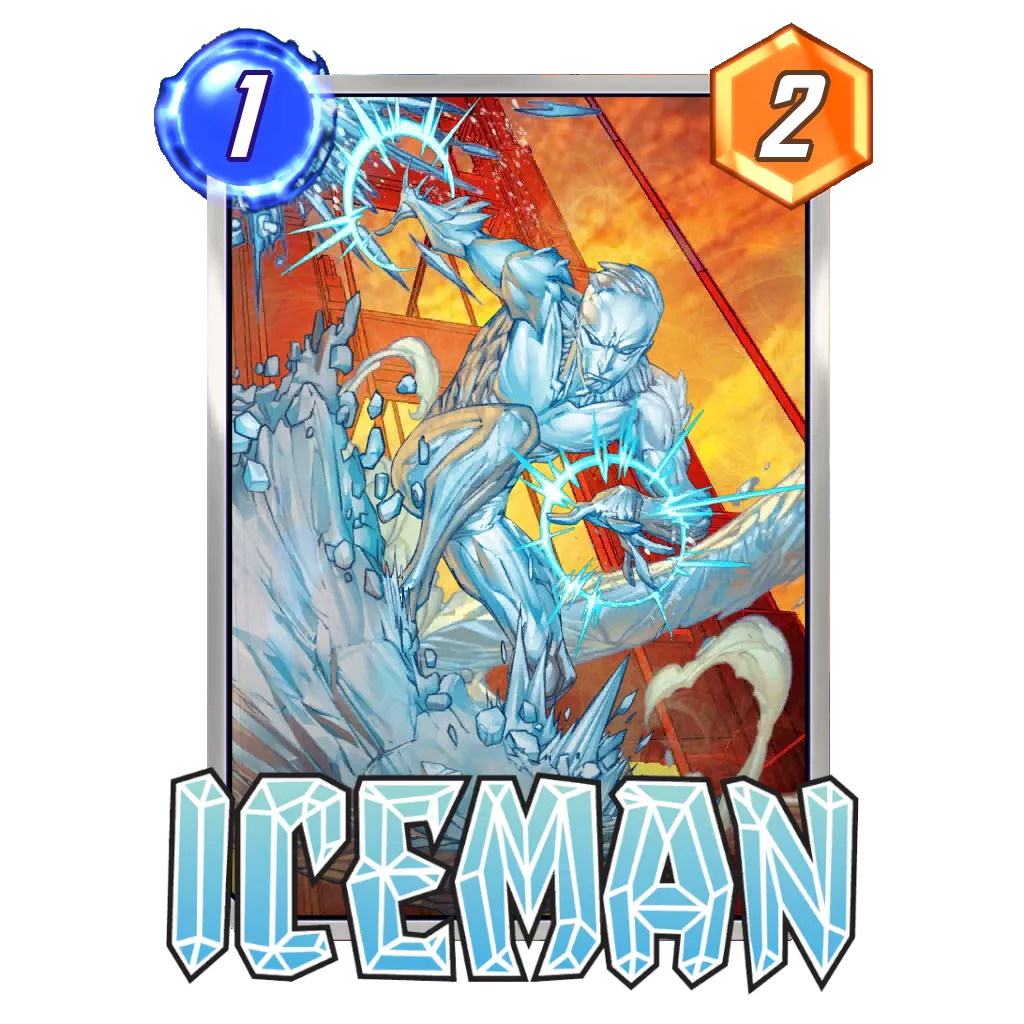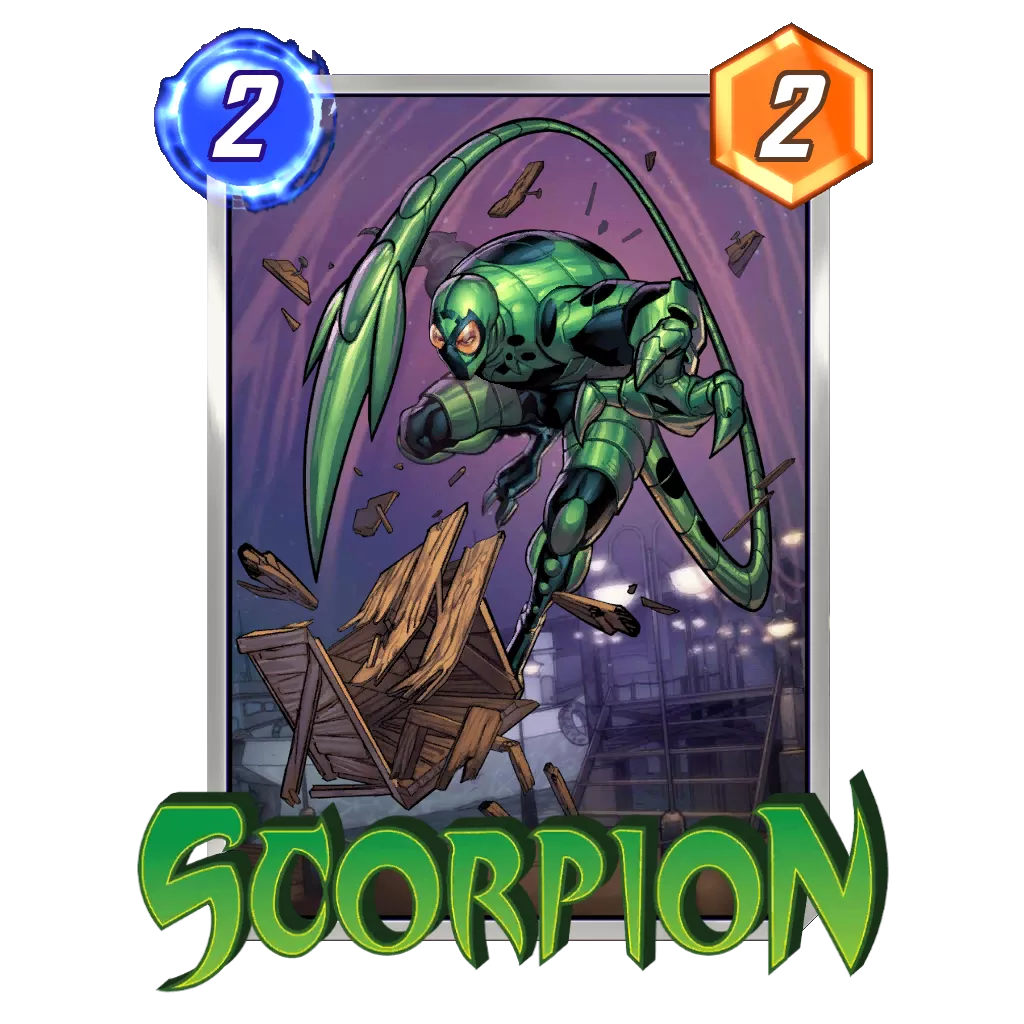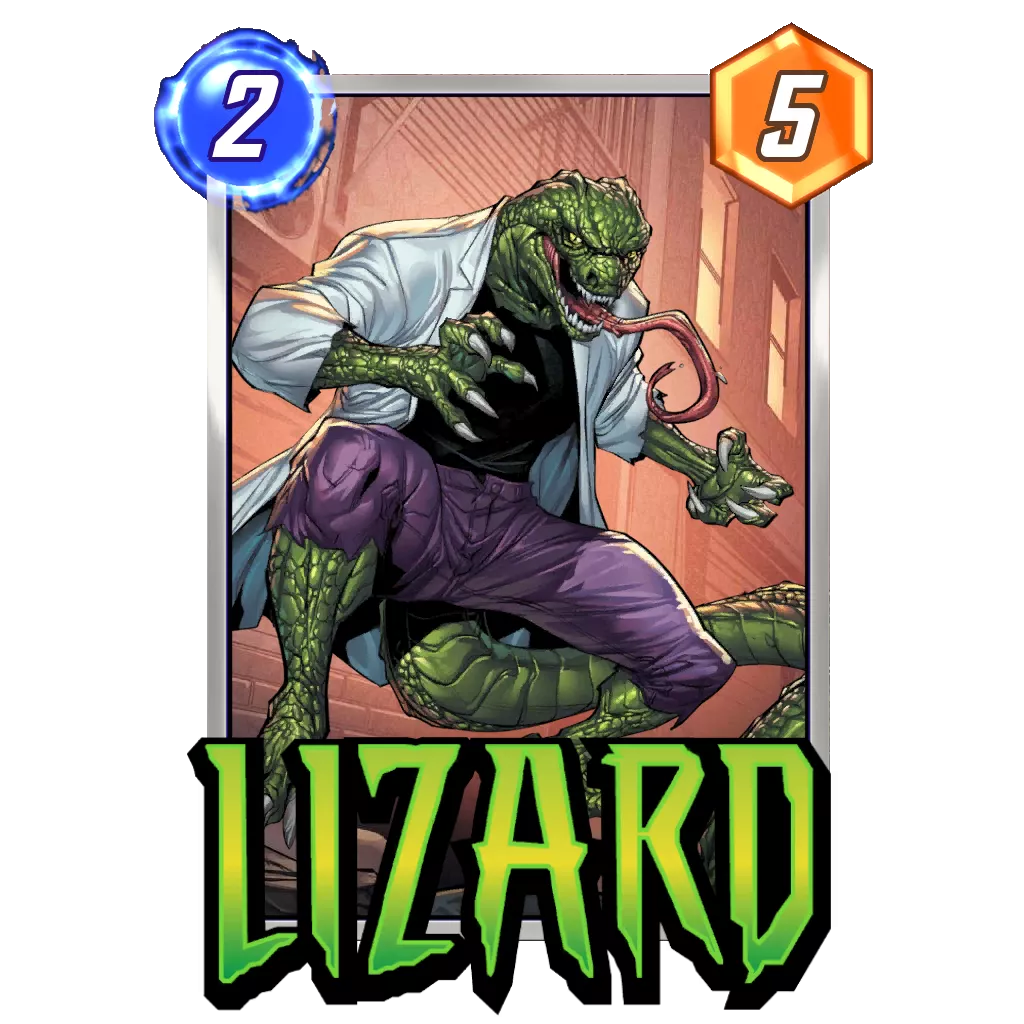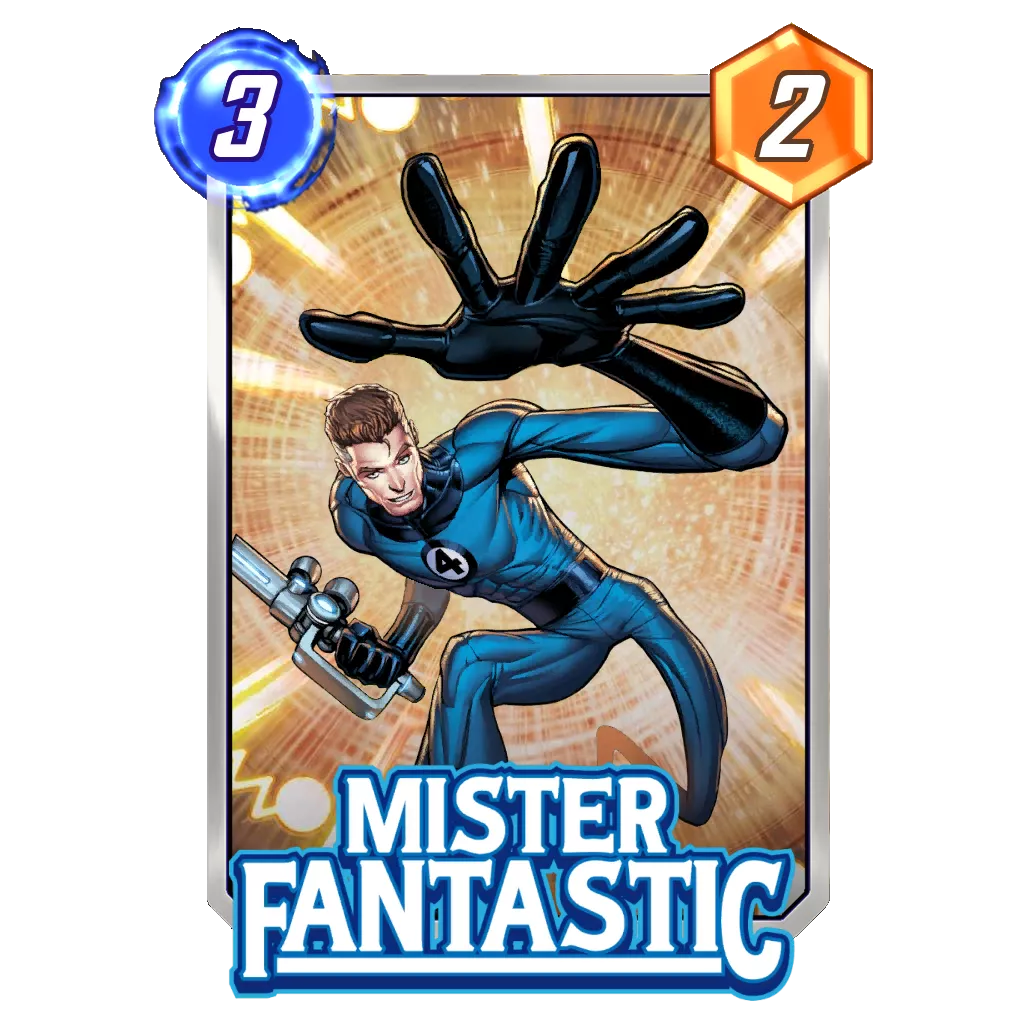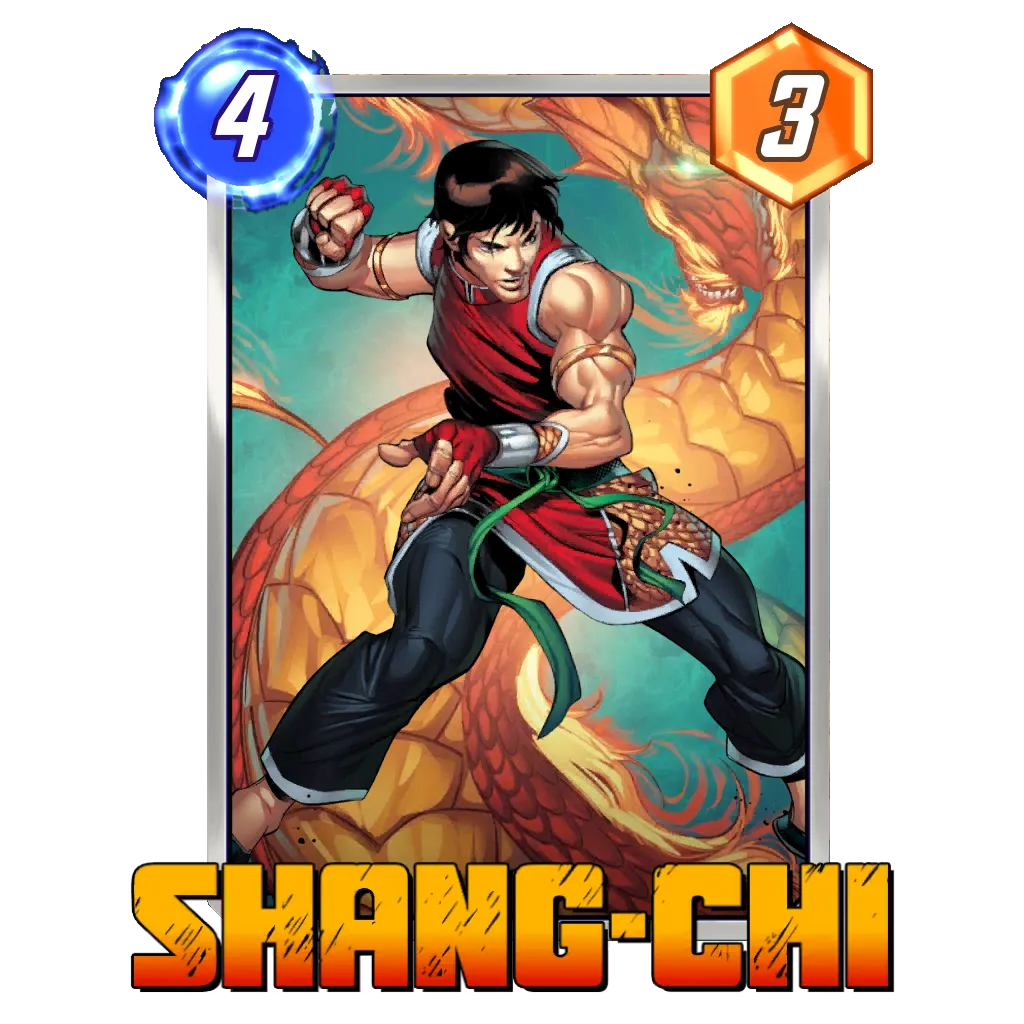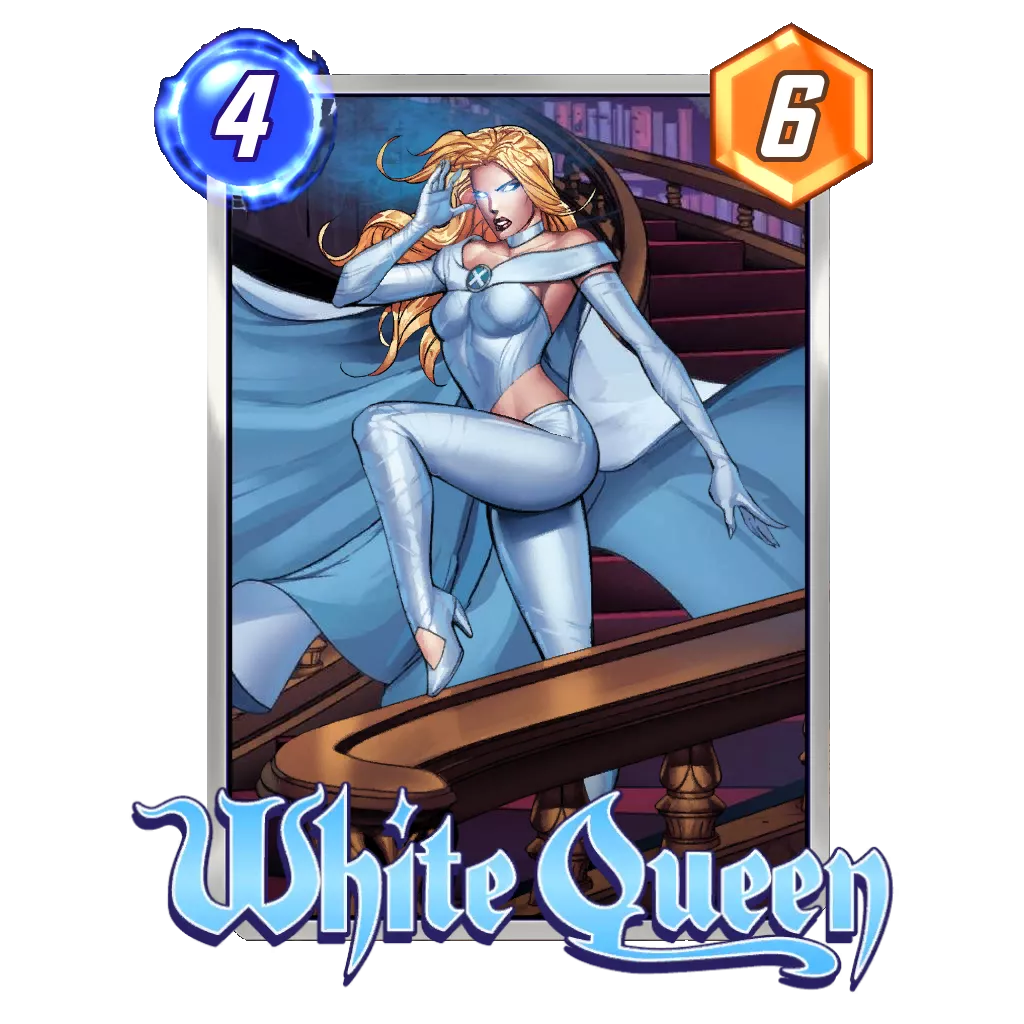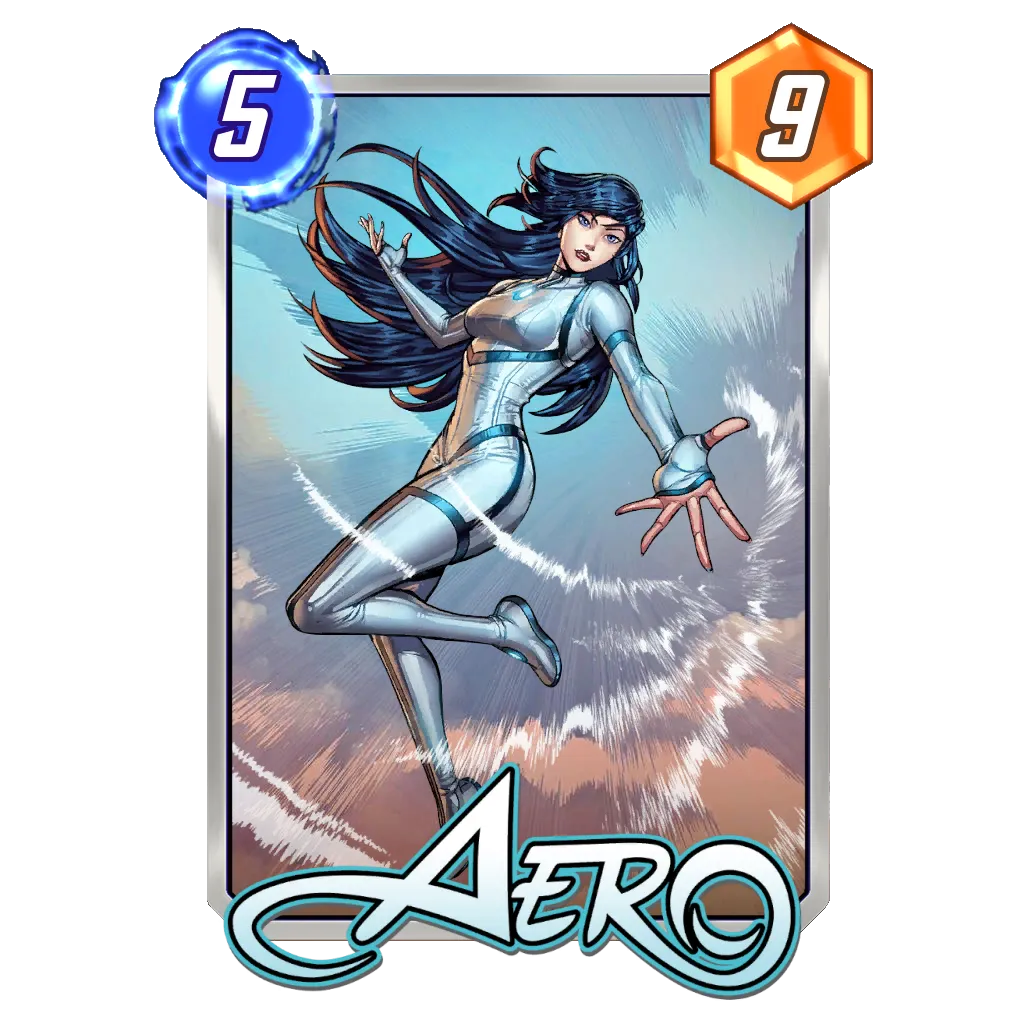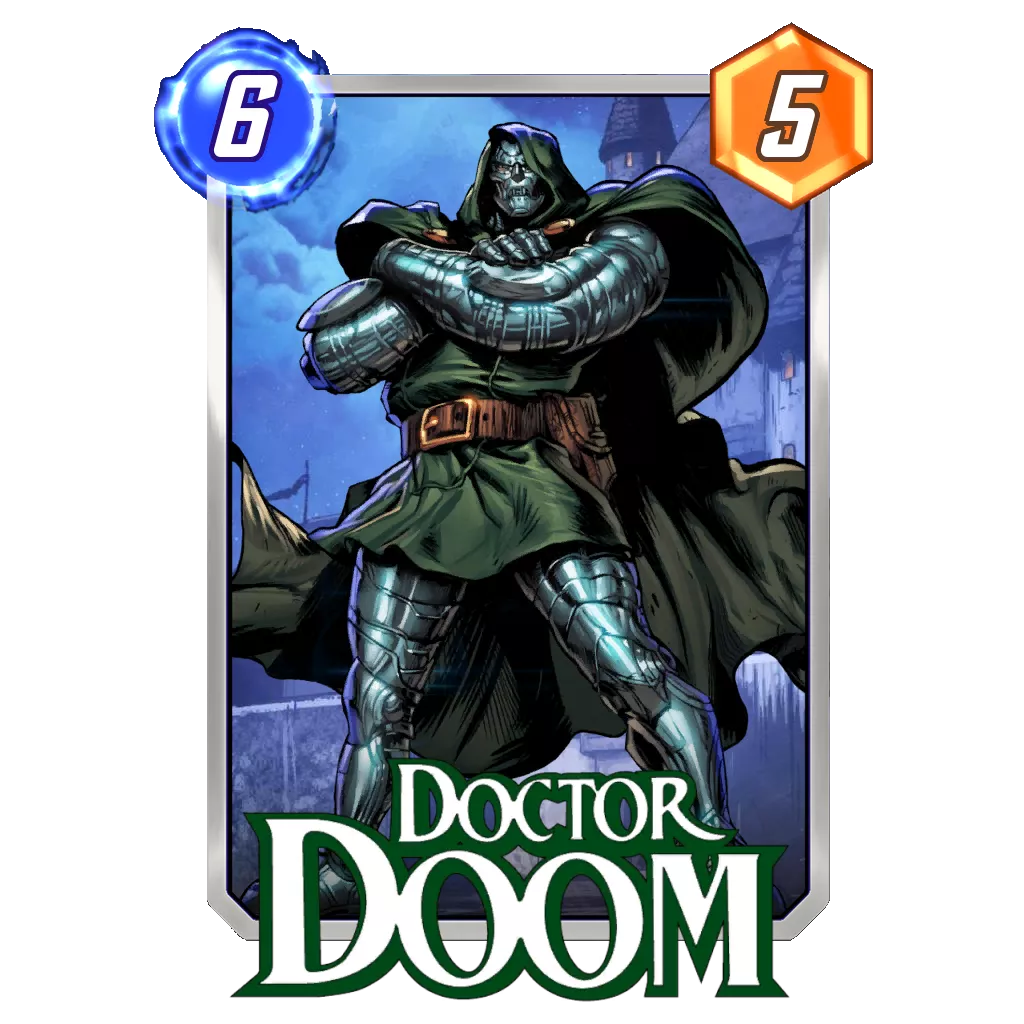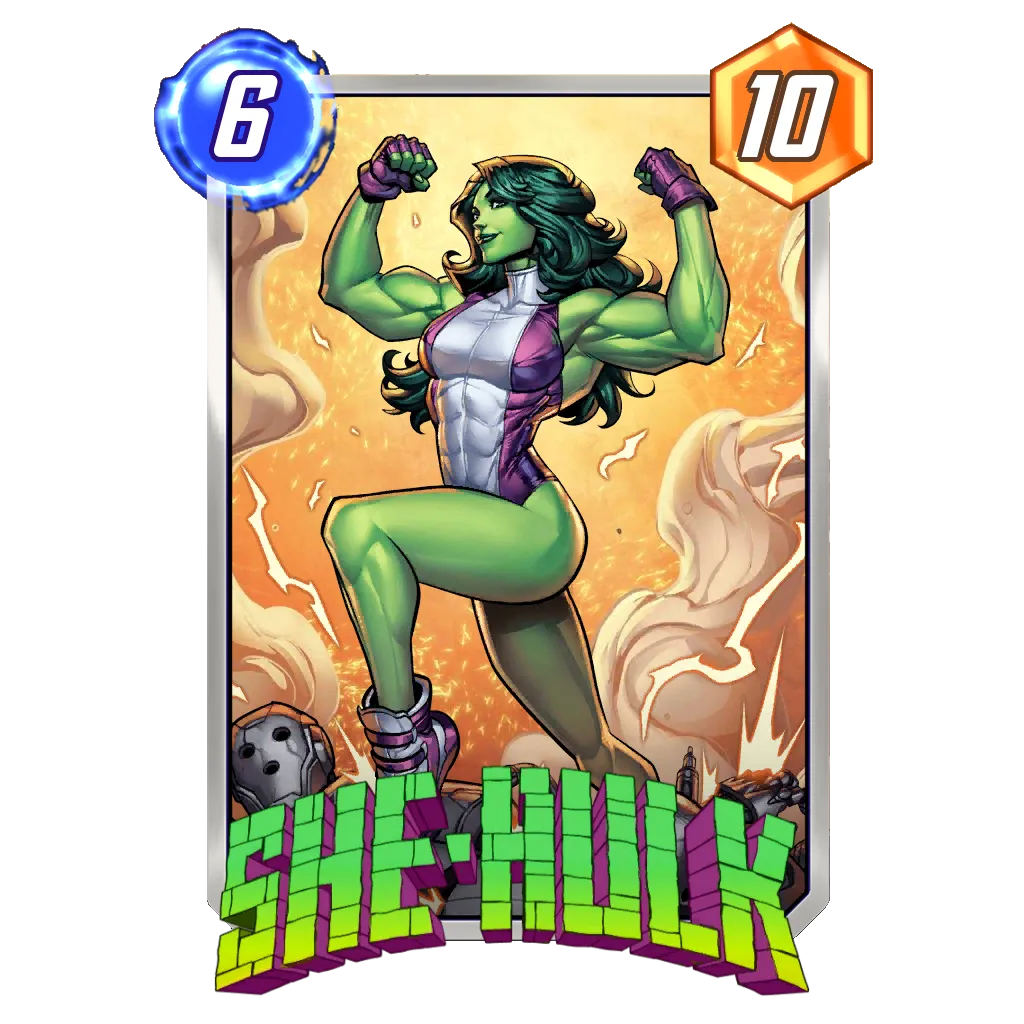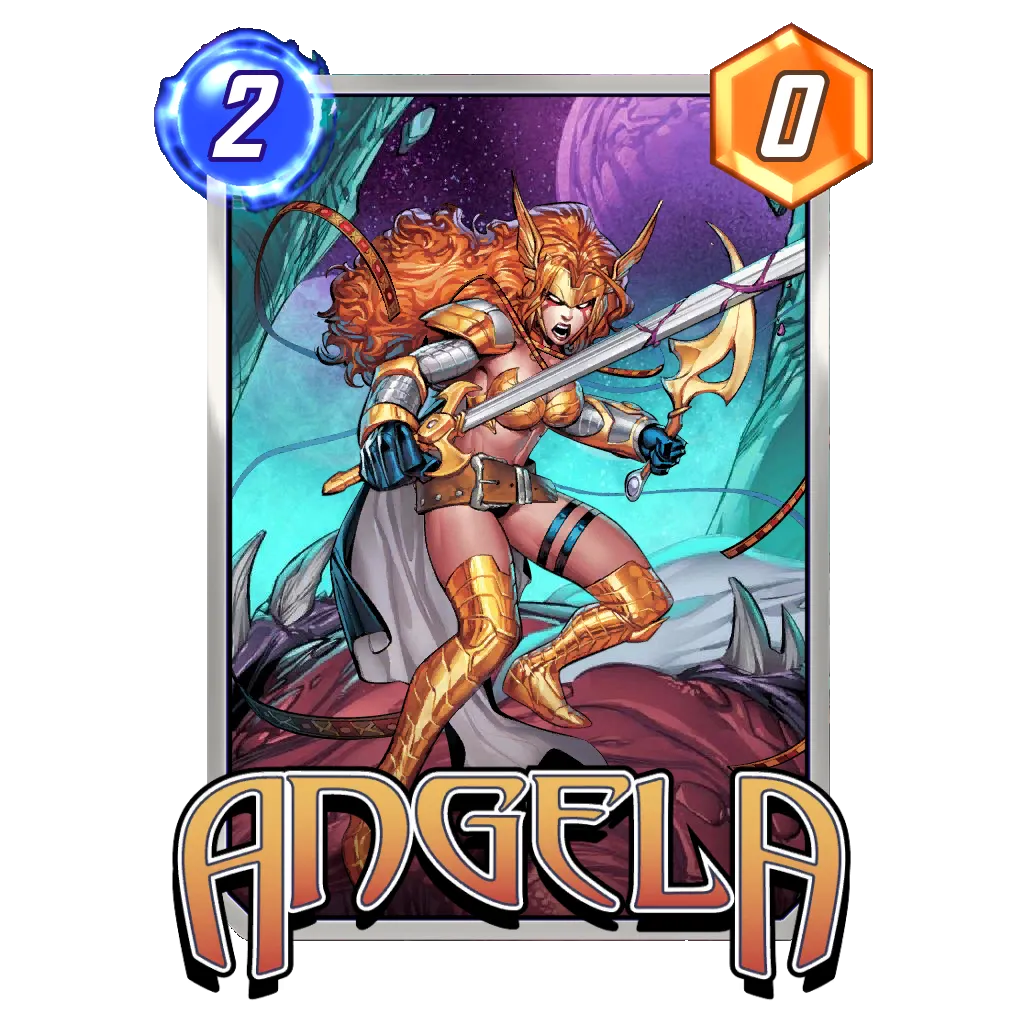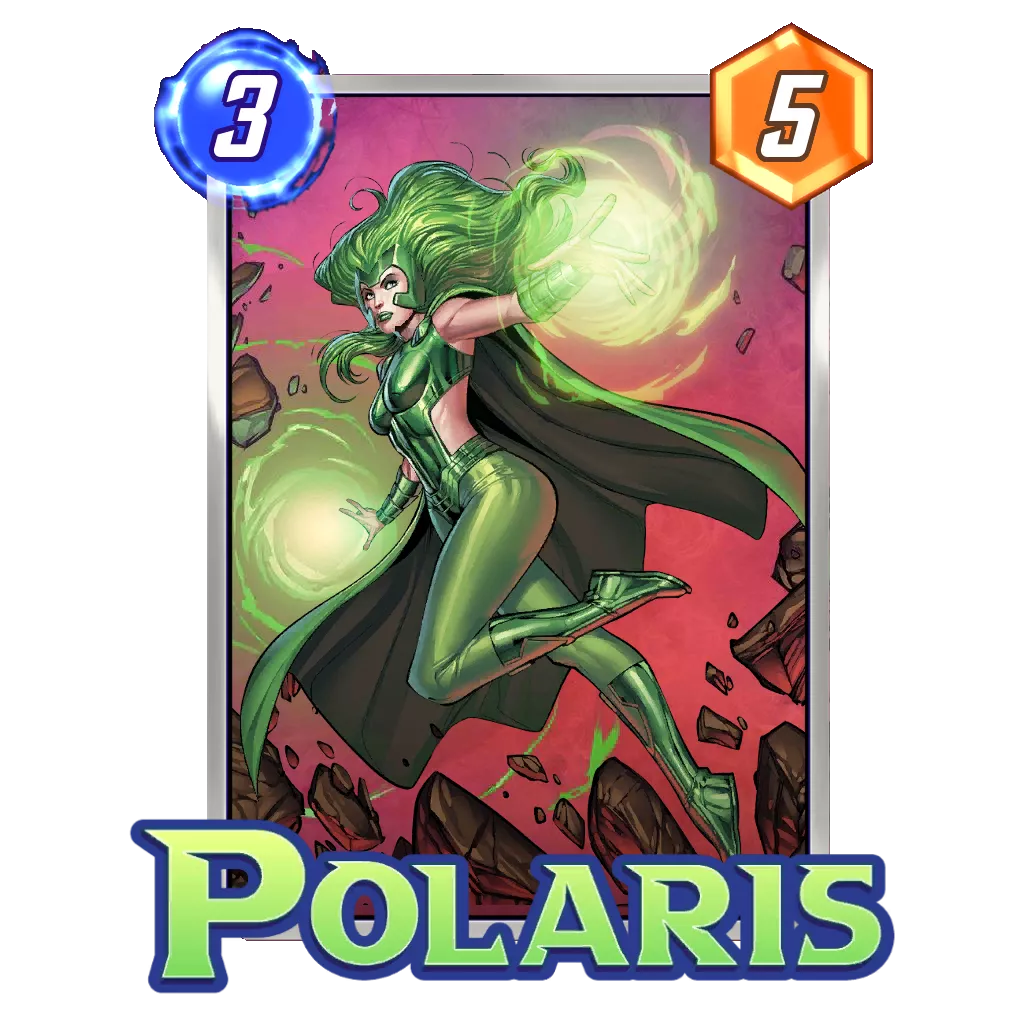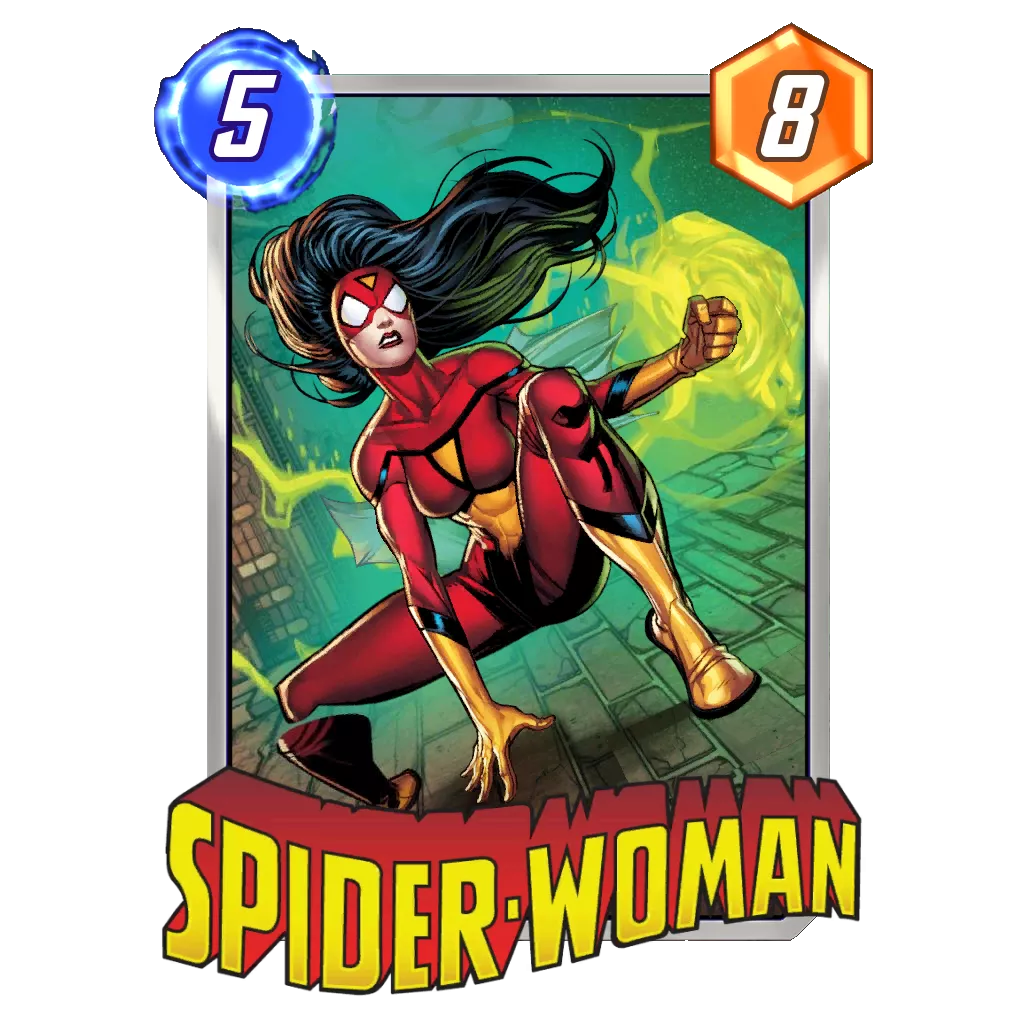Table of Contents
Today, I need you to open your mind a bit broader than normal because we’re not going to talk about a precise deck. There is no core card that defines the Good Cards archetype, and decks aren’t typically built around specific game plans. In order for a card to be considered in a Good Cards deck, it either has to be a solid standalone card in Marvel Snap or have some incredibly strong synergy with one of them. Without an exact card as the focus of the archetype, the glue of the Good Cards archetype is seizing priority in the first four turns. Then the archetype aims to abuse some powerful effects and lock the opponent out of being able to close the gap created in the first portion of the match.
At the time I am writing this, Wave is the anchor of the Good Cards archetype. She allows a powerful Turn 6 with She-Hulk and any other card you wish, such as Aero or Doctor Doom. This package nicely represents the idea of building a lead, locking the match, and completely closing the door on Turn 6 for good measure. Labelled “DoomWave” by WWLos when he shared the build for the first time, the deck has since grown to be the best Pool 3 deck in Marvel Snap by the end of March 2023.
The Good Cards archetype has had several iterations in the past, one of which was the infamous Leech Leader, a feared duo who were nearly impossible to beat if behind on the board. Although the archetype existed in the past, this particular take on it, originated by DeraJN in late 2022, firmly established the Good Cards archetype in Marvel Snap. Ever since then, a deck labelled “Good Cards” has been competing to be among the best Pool 3 decks to climb the ladder.
If you’re not much into highly synergistic decks and would rather play a proactive game plan by building your lead incrementally before slamming the door on any hope your opponent had of coming back, then this is the guide for you!
Deck Presentation
Deck Concept and Strategy
The strategy behind the Good Cards archetype is usually fairly easy to grasp. You are aiming to seize priority, meaning you want to be ahead in points on at least two lanes. In order to accomplish that, our first three turns are filled with high scoring, efficient cards such as Lizard and Mister Fantastic. We also have disruptive cards (Iceman and Scorpion) to prevent our opponent from playing as they wish. Sunspot comes in to guarantee we don’t lose any energy in case our draw is sub par.
Turn 5 is where the deck begins to seal up the game. You will typically play a disruptive card with priority, meaning the opponent won’t be able to react to it with a counter card. With the disruption in play, the opponent should not be able to do what they planned on Turn 6, severely limiting their ability to turn things around. In the past, Leech filled this role; cancelling abilities in the opponent’s hand was (and still is) a great way to ensure victory. Now it is up to Wave to shut the opponent out of the game. We can play She-Hulk for two energy plus any other card in our hand while the opponent is limited to only one card.
There are a few decks that are able to counter this strategy, such as other decks with She-Hulk or Destroy decks with Death. As for She-Hulk, the card is only playable alongside another card after Wave if one has passed at least two energy, something not so common if the opponent isn’t playing Wave themselves. Death is the biggest problem, but White Queen can copy her to our hand and even the power both players have access to.
There are quite a bit of elements to keep in mind when playing this deck if you try to break it down piece by piece. The trick, however, is to look at it like a cohesive block, and it suddenly begins to make a ton of sense. In a few words, the mantra of the Good Cards archetype is this: play to get ahead, then stay ahead.
Core Cards
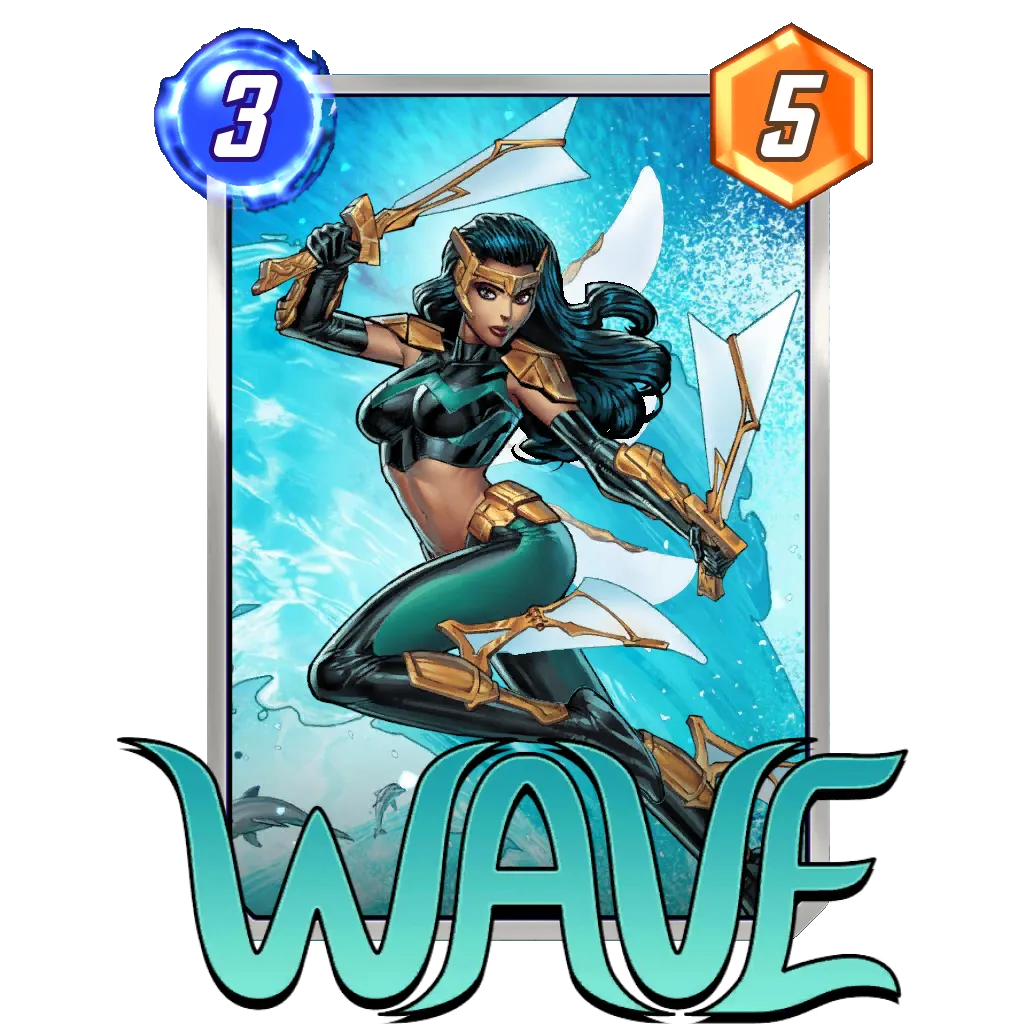






As mentioned already, the Good Cards archetype doesn’t really have any core cards other than those that define the current popular version. For now, it is the Wave and She-Hulk pair that give the deck all its flavor, so they should be considered core. The former is the card we are trying to gain priority for. Indeed, Wave doesn’t score a lot of points on Turn 5, so we need to be ahead by then in order to keep our lead and priority. The latter is the payoff as it allows us to play two cards when the opponent can only play one after our Turn 5 Wave.
Every other card in the deck is included because it gains priority (Lizard, Mister Fantastic), it improves consistency (America Chavez), or it is a strong card in the Marvel Snap metagame. In that regard, as long as you can find a reason why a certain card might be good to include in your deck, you could probably test it alongside Wave and She-Hulk.
Cards Substitutions
Since there isn’t a big core to the archetype, we have a lot of possibilities when it comes to how we want to build a Good Cards deck. Here’s a breakdown at each energy cost:
- 1-Cost: Sunspot is hard to remove as it is the best cheap card in the game. Iceman is more flexible, although it messes with the opponent’s energy early in the game which could be key to seizing priority. Against other decks looking for priority or with specific play patterns, it is usually a solid card.
- 2-Cost: Lizard is the go-to card to gain priority at this cost in Marvel Snap, leaving Scorpion to be flexible. The latter could be changed for Daredevil, Armor, or Goose, all solid cards in the current environment.
- 3-Cost: Mister Fantastic takes the nod because it impacts all three locations at once, which is an insane ability to seize priority. Polaris is another strong 3-cost to consider, or even Cosmo, but these usually demand changing a card at another energy cost.
- 4-Cost: White Queen doesn’t have the highest power at this cost, but it does give us valuable information as to what to expect on Turn 6. This card feels like the most flexible slot in the list, so feel free to change it if you are looking to play something else. Shang-Chi, on the other hand, is simply too strong to pass on and feels impossible to change.
- 5-Cost: Aero was untouchable before her nerf, and she is still a great inclusion afterward. She also synergizes with Wave since the opponent is limited to one card on the last turn. I like including a 5-cost in the deck as it opens a pass on Turn 5 into She-Hulk plus 5-cost on Turn 6 for when we don’t draw Wave. Aero is a good middle ground in both scenarios. Still, there are other impactful cards to consider like Spider-Woman.
- 6-Cost : Doctor Doom has been the default card here because it impacts all three lanes at once, and America Chavez is only included as a consistency tool. Magneto seems to be the next best choice if you want to remove either of these two.
Apart from changing a card for something of similar value, there are a few packages worth considering in the deck (even if they require a bit more deck building finesse to make them work):
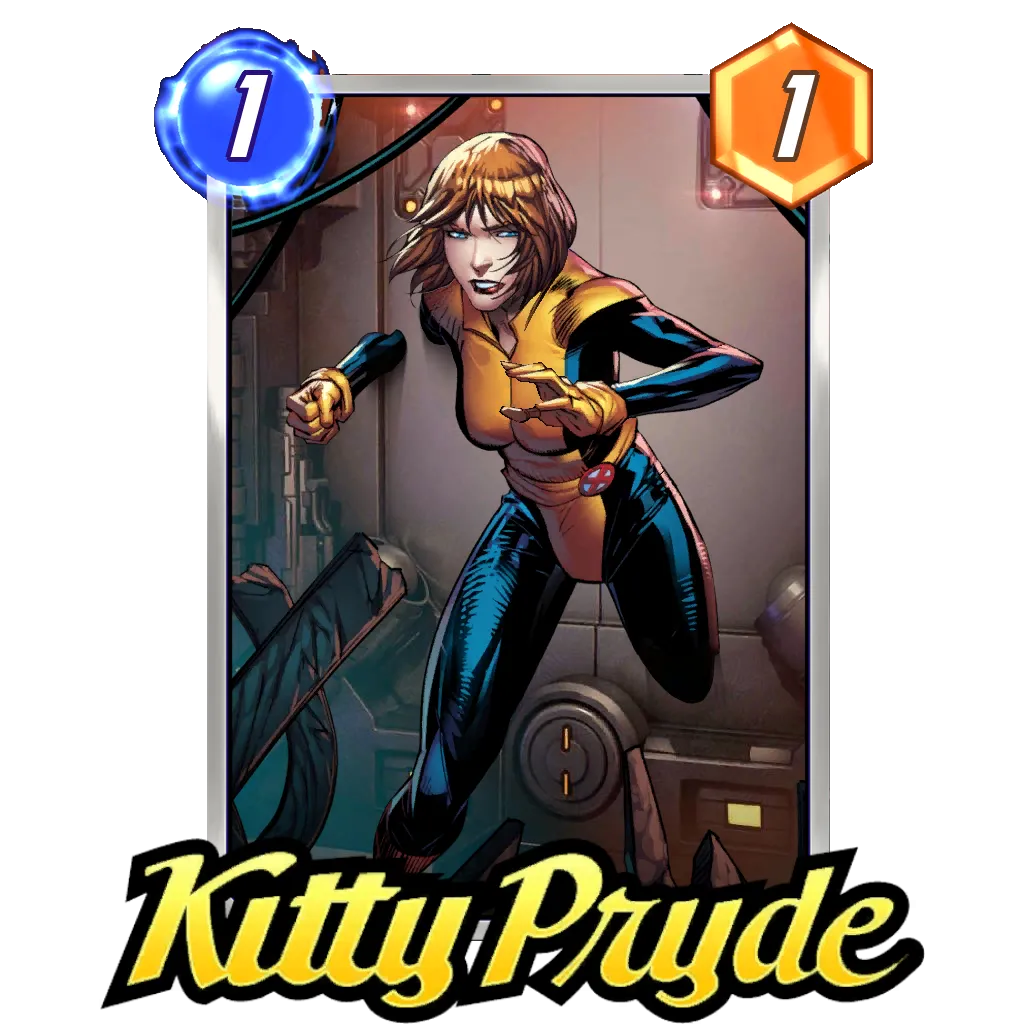









A weak start, but both can quickly grow together in order to be strong by Turn 4 – right when we are looking to take priority. Kitty can avoid a Killmonger in the absence of Armor when Sunspot can’t. The downside, of course, is the cost; bouncing and replaying Kitty every turn will start to become quite expensive.
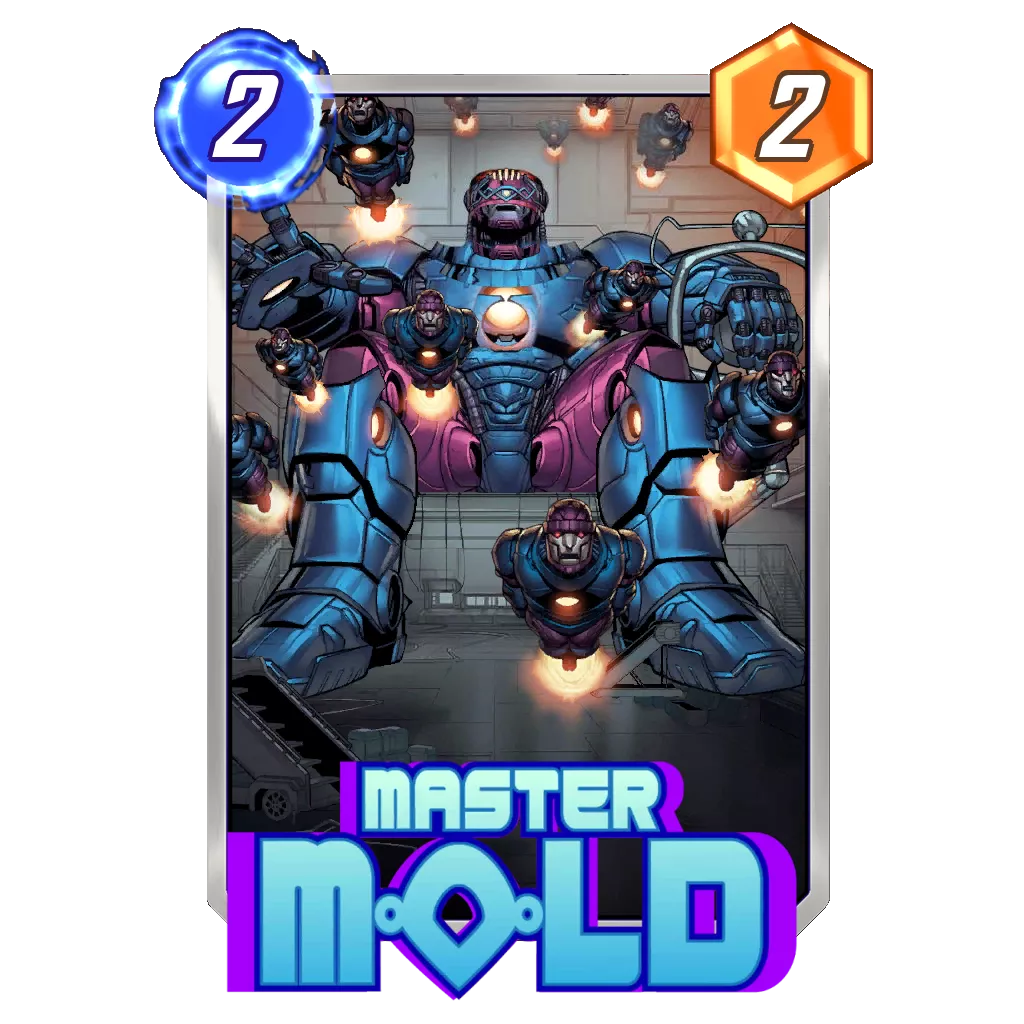



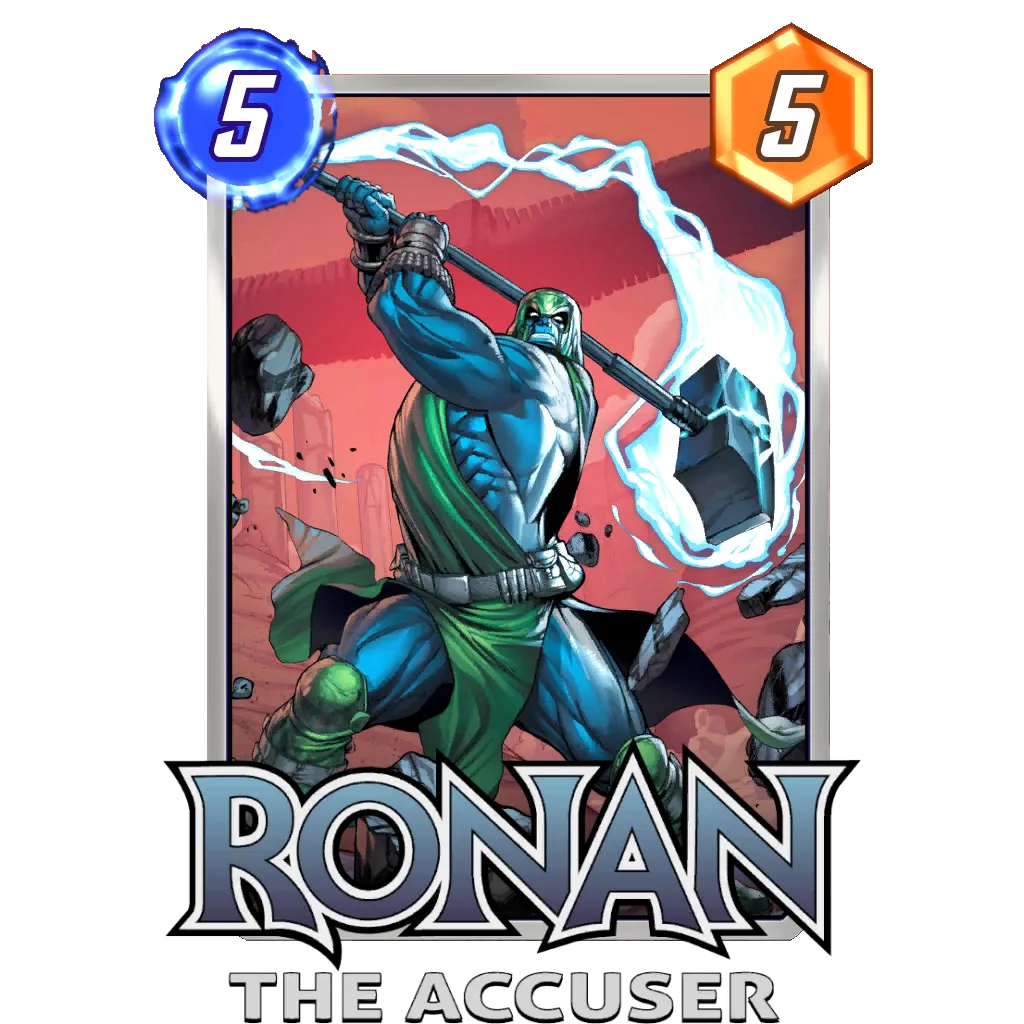






This package adds a bit of disruption to the deck. Ronan and Master Mold work quite well with Wave as the opponent can’t empty their hand on Turn 6 or utilize their Sentinels. Also, Maximus is a great card for scoring points and seizing priority. It technically develops more power than Mister Fantastic, but it only does so on one location.
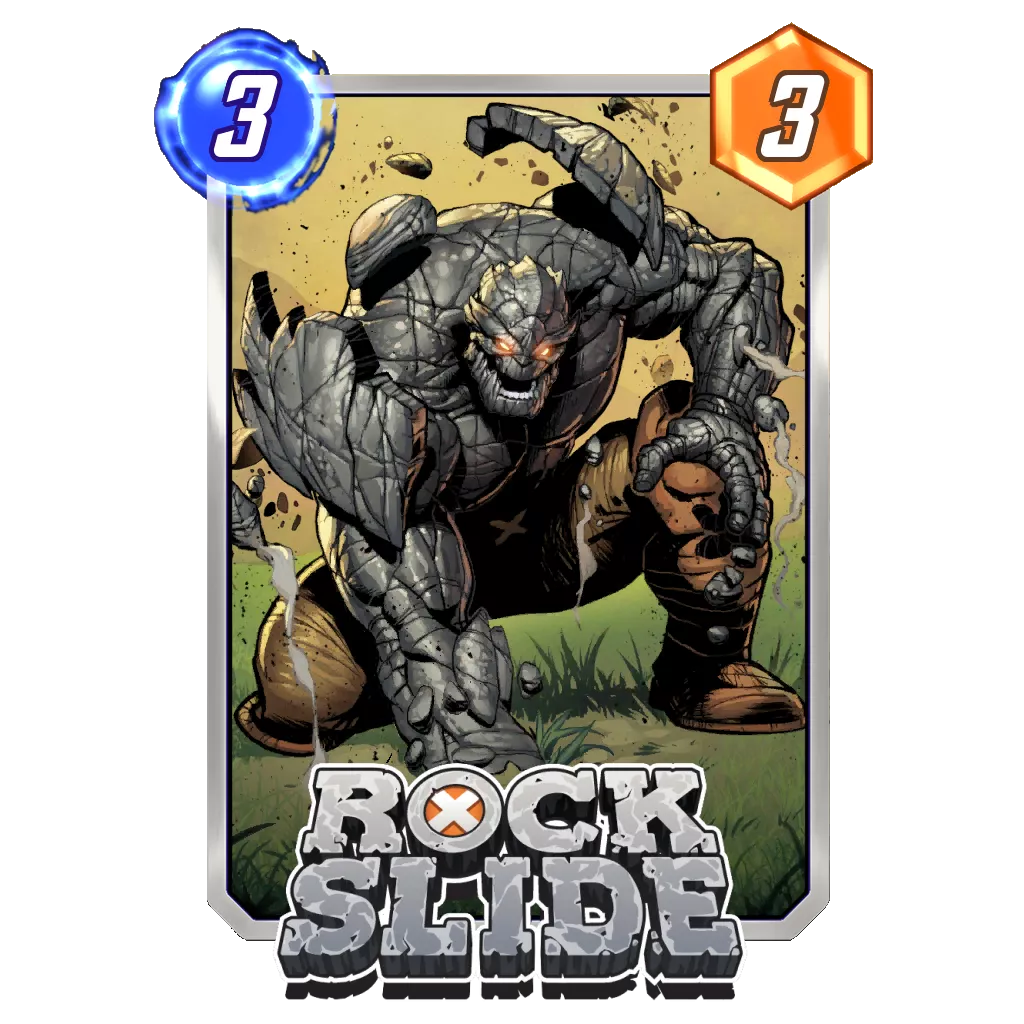






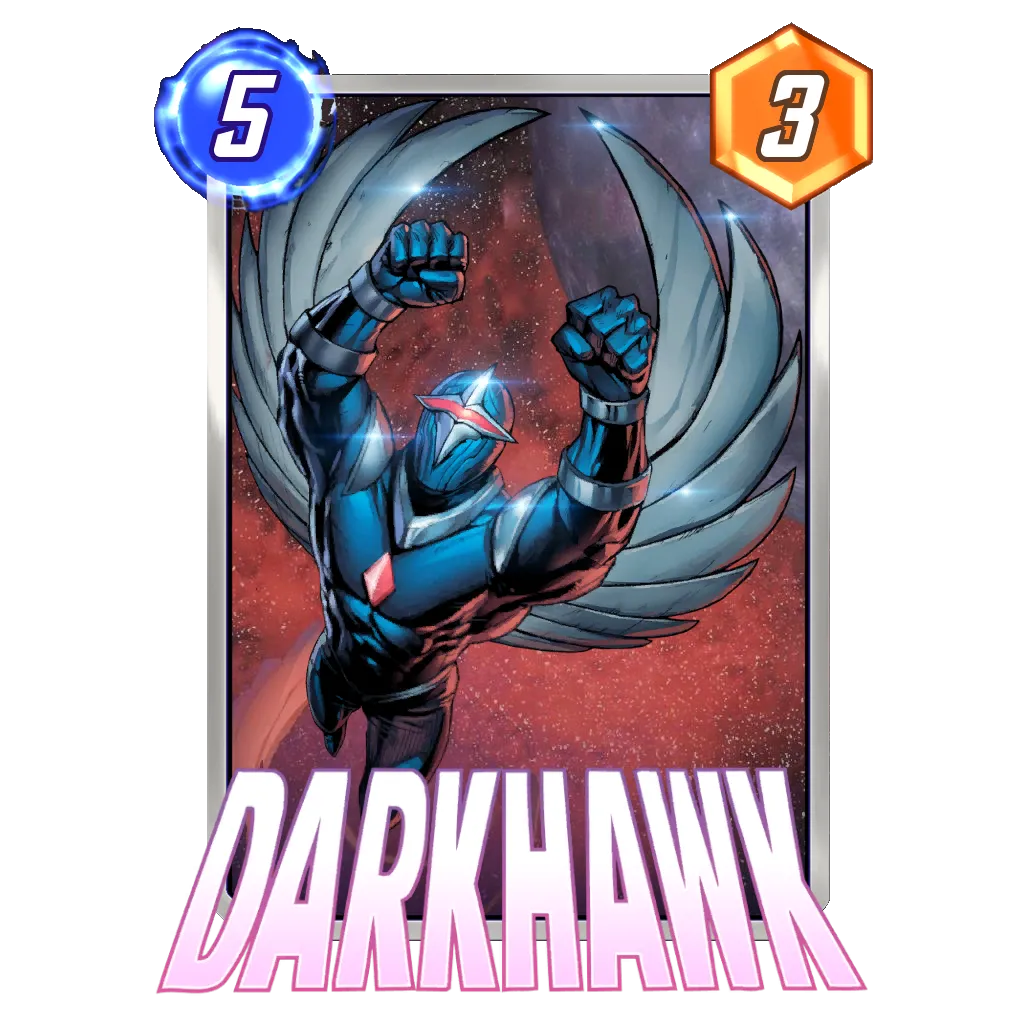










In the same idea as the Ronan package, Darkhawk provides both a good ceiling for points, while bringing disruption to the opponent’s deck with Rockslide and Korg.
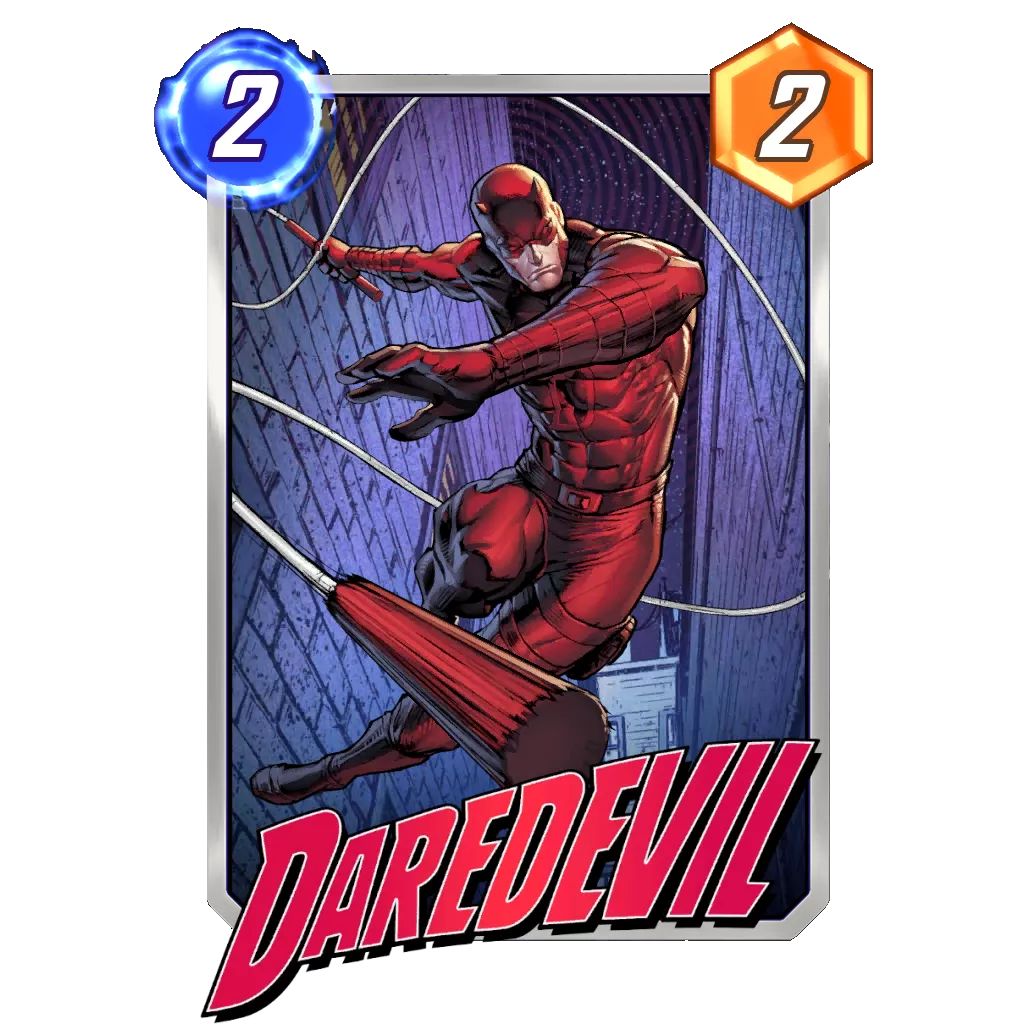








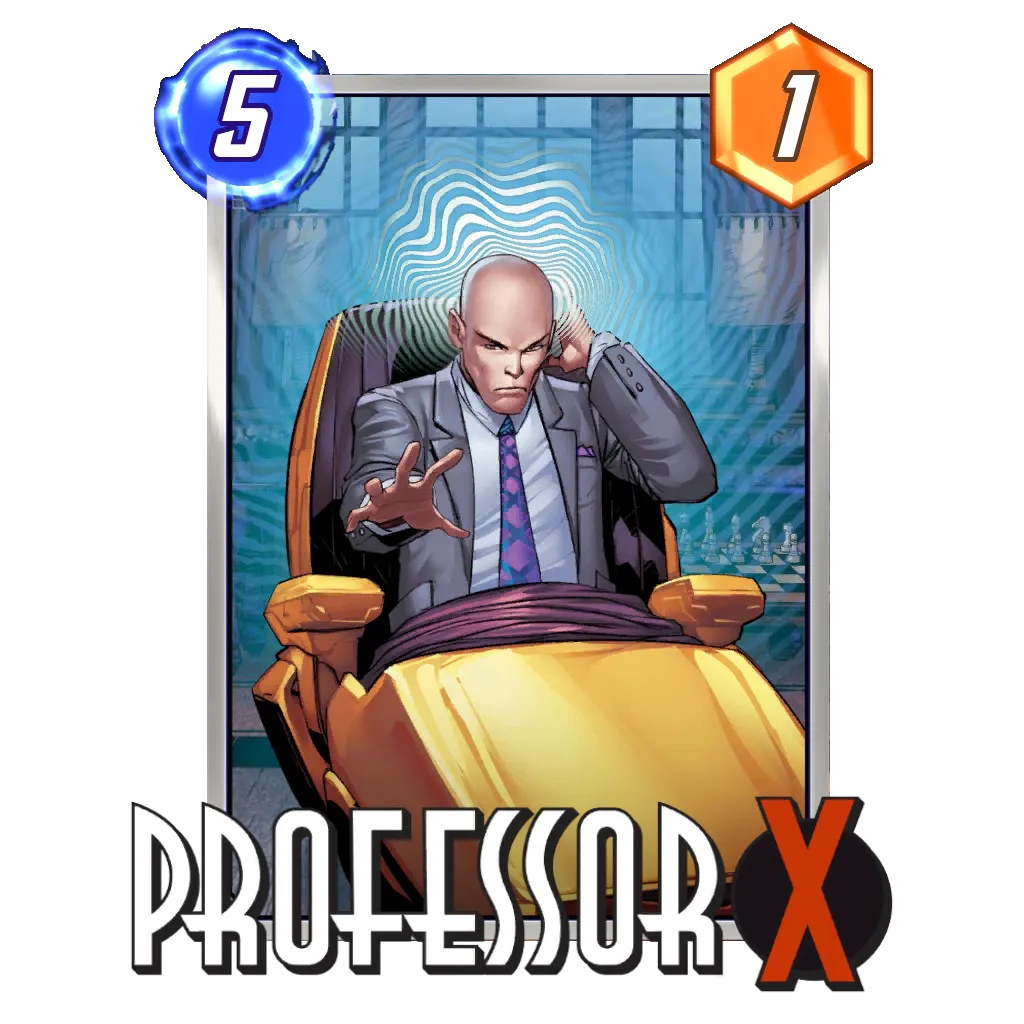









You probably want to remove Doctor Doom if you choose to go in this direction. Professor X is solid in the deck as you should be in the lead by Turn 5 and, therefore, in a good position to lock a lane. Daredevil helps you pick the optimal location to lock, as well as inform you if your Wave is good/safe to play.
Here are a few ways players have built their Good Cards decks recently:
Snap and Retreat
One of the biggest strengths of the Good Cards archetype is its ability to know if everything is going according to plan. Before you get to Turn 5, your hand needs to include the tools for your synergy on the last two turns. If you have Wave and She-Hulk already, you’re probably set up perfectly for the late game, and the only thing left to check is the board. The big tell in that case is whether you are ahead in the match or not. If you are, and you anticipate keeping the lead until Wave can be played, it is close to the ideal scenario and should warrant a snap.
When faced with an opponent’s snap, the logic is quite similar. If you are behind on points, Wave isn’t likely to be extremely effective because the gap will widen when you only play three points on Turn 5. You could identify your opponent’s deck as one where Wave will be a big problem, but, even with She-Hulk in hand, falling behind on two lanes before going into the last turn is typically a risk not worth taking.
Overall, keep the flow of the game in mind. Turn 5 is the most important turning point of the match for the Good Cards archetype. If you see yourself ahead by then, you should be thinking about a snap (or at least stay in the match). Otherwise, if you fall behind early and your hand isn’t positioned to catch up quickly, then playing safe and/or retreating is probably the way to go.
Locations
Depending on how you are building your deck, the impact of each location will vary a lot. In that sense, you should ask yourself how the locations impact your opponent first. For example, do you want to take on a Patriot deck with Onslaught's Citadel or Washington D.C ? Are you confident Thanos Lockjaw won’t be too strong with a Quantum Tunnel in the match?
Locations are among the most impactful Marvel Snap features, even if your deck isn’t built to have any particularly strong ones. If you can’t abuse them, your opponent might.
One location worth mentioning is Dream Dimension, which breaks the Wave and She-Hulk synergy. On Turn 5, Wave will cost four, so you will not pass enough energy to play She-Hulk with another card.
Match ups
Most of the deck’s match ups are decks that are annoyed by Wave, usually because they plan to play several cards on Turn 6. In that category, we can find Sera decks and other combo-based strategies first and foremost. Some highly synergistic builds looking to disguise their important card, such as Patriot and Cerebro, tend to keep their signature card for the final turn to play alongside Mystique. These opponents can also be heavily punished by Wave if they decide to play greedy. Don’t read too much into that second part, though, as those decks are also able to play proactively and keep a big card for Turn 6.
The difficult match ups include those that also abuse Wave, like the DeathWave deck we already discussed. Decks that are able to develop solid points with just one card, such as Patriot with Ultron, Electro Ramp with Odin, and Shuri Zero with Taskmaster, can also be difficult to beat safely. Aero tends to be much better against these opponents since moving their big card can be a huge boon.
Turn by Turn Breakdown
Turn 1
There is no reason to hold your cards early on. If you have a 1-cost, feel free to play it. With Mister Fantastic and Doctor Doom in the deck, there aren’t many reasons to play onto the unrevealed locations if the one you know about is safe.
Turn 2
Same logic as turn one: do not hold your cards at this point. Look to play your card on another lane; this is a stronger way to build priority. Lizard is great for early priority, but the other 2-cost you are playing might need to come down earlier, like Scorpion or Angela. Lizard will often remain strong through the whole match.
Turn 3
Mister Fantastic is the go-to play here as it’s our best way to seize priority for the rest of the match. The card will is best played in the middle location, if possible.
On very rare occasions, you might be tempted to play Wave here. If this is the case, make sure you have a strong four-five-six pattern with a 6-cost on Turn 4 and on Turn 6. Pulling this trigger should only be done if Wave is particularly strong at this point against your opponent or you have two 6-cost cards with a strong 5-cost in between.
Turn 4
This is the last turn in the “seize priority” part of the game plan. There are two ways to go about it:
- Heavily invest into a lane, hope we don’t have to play there anymore, and focus on winning another lane with our Wave and She-Hulk pattern. More often than not, this choice is best if we don’t expect the opponent to be very flexible or have the ability to challenge multiple lanes at once.
- Stay flexible and try to be ahead on most lanes, but keep our options open. This route is usually strong with Doctor Doom in hand because we’re able to impact all locations at once, while the more precise route will suit Aero better.
Turn 4 is usually a good time to snap if you anticipate having all the criteria for your deck to work properly. Once you play Wave on five, the opponent will know more precisely if they should retreat or not.
Turn 5
Unless a specific situation arises, or you don’t have She-Hulk or Wave in hand, you will play Wave. If this isn’t an option, try your best to adapt to the situation.
Turn 6
The last turn is extremely flexible. It depends entirely on how you played the game up until this point. If you played Wave and have She-Hulk in hand, there should no reason to change your plan at this point. Otherwise, simply make your best play based on the situation.
Closing Words
A routine contender in the Marvel Snap metagame for months now, the Good Cards archetype should remain a classic in the game for years to come. At the end of the day, there is nothing specific to this play style. Simply place the strongest cards in the game in a deck and let them be strong cards together.
With only 12 cards per deck, most players try to build highly synergistic decks and create points from their cards interacting with each other. The Good Cards builds decide to take a different route and rely only on a few synergies. This way, the deck maximizes adaptation to most situations, leading to having a shot at victory in almost every game.
If you aren’t particularly good at creating combos, projecting yourself far into a game, or anticipating your necessary draws and interactions, the Good Cards archetype might be perfect for you. It relies on Marvel Snap’s core mechanics and features basic synergies that are easily accomplished. And as an added bonus, it is actually one of the best decks to play in the long run because it has a great capacity to adapt to its environment. Once you understand how the archetype functions, you could play it for months and include tons of cards to adapt to your future opponents and metagames.
Currently, DoomWave is the dominant iteration of the archetype; however, with new cards joining the game weekly and good cards being the focus of balance changes, who knows when the archetype will adapt next?
Want to discuss your ideas around the Good Cards archetype or share a different way to build it? Join us on discord and meet the Marvel Snap Zone community! As for myself, you can find me on Twitter sharing decks and opinions around Marvel Snap.
Good Game Everyone.
Premium
Enjoy our content? You can Support Marvel Snap Zone and your favorite content creators by subscribing to our Premium community! Get the most of your Marvel Snap experience with the following perks for paid membership:
- No ads: Browse the entire website ad-free, both display and video.
- Exclusive Content: Get instant access to all our Premium articles!
- Meta Reports: Exclusive daily meta reports, such as the Ultimate Card Metrics Report, Top 10 Decks of the Day, Top 30 Cards, and Top Card Pairs tailored for you!
- Team Coaching: Join our free weekly team coaching call sessions on the Discord server. Claim your Premium role and gain access to exclusive channels where you can learn and discuss in real time!
- Premium Dashboard: Get full instant access to the member-only dashboard, the all-in-one page for all your benefits.
- Support: All your contributions get directly reinvested into the website to increase your viewing experience! You get also get a Premium badge and border on your profile.
- Special offer: For a limited time, use coupon code SBYREX4RL1 to get 50% off the Annual plan!
























